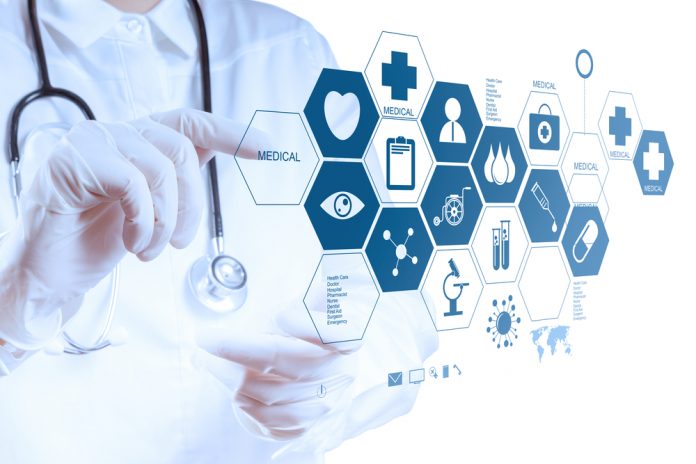This article is written by Shreya Tandon, a law student from Vivekananda Institute of Professional Studies (VIPS), IP University. It covers the scope of the emerging field of Digital Medicine worldwide and in India.
Table of Contents
Introduction
“We Are Moving Towards The Amalgamation of Biomedicine, Artificial Intelligence, Wireless, Information Technology, and Telemedicine- An Era of Evolution. Even The Stethoscope is Now Digital and Of Course, There’s An App For That Too!”
Those days are gone when healthcare was only confined to doctors’ clinics or dispensaries. With the advancement in technologies and transformation, the healthcare business has emerged with a digital interface. Digital disruption has modified the medical profession and has given it a new face. Digital medicine is a scientific sphere where scientists and doctors seek to elaborate upon different phenomena and procedures, treat patients online by solving their problems and explore new technologies with the purpose of making human life better. It’s a positive step in the way of making the world modern. In a broader sense, digital medicine is a combo of technology, knowledge, and methodology which are used to assist rehabilitation and health-care services and involves digitalization of hospital administration via 3D virtual endoscopy and surgical interventions in the field of neurology and so on.
The Idea and purpose of bringing health on a digital platform
- More development in healthcare delivery
- Boosting access
- Reduce and cut the cost
- Improving the quality of life by enhancing healthcare facilities online
- Bringing the individuals at ease
- Personalized treatment for each patient and using unique techniques to fulfil what all is required
- Time saver
The surge in on-demand healthcare
The main aim of digital medicine is to go the extra mile to streamline the physician’s work, improving the recovery rate of patients, optimizing the whole system, lessening the scope of human errors, and reducing cost through a web experience. Innovation and creativity play a major role in this whole process.
Information Technology is the foundation of digital medicine and has given birth to a number of IT and Non- IT companies. The trends are touching the sky and the surfeit of wearable devices has been introduced with time to maintain a track for fitness goals. Popular brand names such as Google, Apple, and Microsoft invest heavily in such consumer goods which held in regulating and capturing health data. These devices often record the number of steps a person walks in a day, heart rate, muscle activity, calories burnt, and sleeping cycles. All these developments have made its place in the priority list of how we look at our lives 20 years later and it is already revolutionizing!
Key trends and the future in digital medicine
Doctors are regarded as the rockstars of the medical world but what will happen when Digital Medicines start Trending? Will, Their Mystic Qualities be hampered?
The eHealth trends areas listed below:
User-Friendly Patient Gateway And Electronic Health Record
The Patient Portal Technology is an easy system which provides a doorway for patients to access their daily health update with their personal physician. The information regarding the latest reports, lab results, medical history, medications, and the number of visits is displayed on their website which is accessed through the patient’s username and password. Such portals do provide the patient to message doctors anytime they want, ask for a prescription fee, and given the option of rescheduling their appointments.
Telemedicine, Online Consultations and Telehealth Apps
Telemedicine means the proper diagnosis of the patients by using several ways of telecommunication technology. With time this theme has grown and there has been a rapid change in the United States healthcare system. The need for telecommunication is felt where the state has a large population and where the access is limited. In urban areas, underserved communities also face problems arising from wait times which have increased from 18.5 to 24 days from 2014, according to the 2017 Survey of Physician Appointment Wait Times and Medicare and Medicaid Acceptance Rates. Telemedicine is improving diagnosing and treatment by making it easier for patients to get access to specialists, too. The availability of electronic records has also made it simpler to forward documents to specialists. In rural areas, this can mean the difference between having or not having expert input into a case.
Internet of medical things (IoMT)
Mobile Phones and other electronic devices play a crucial role in tracking the severe illness of their patients. The Internet of Medical Things is a mixture of telemedicine and development in IoT. This concept motivates the overall improvement in everything ranging from patient experience to profitability. Lack of communication is the only challenge under this head.
Top worldwide trends in 2020
- As to take care of their employees Amazon is going to launch their full-scale electronic medical record system.
- Google Recently acquired Fitbit and is expected to launch its new line of trackers in this year.
- A 5G Application is likely to arise in the healthcare setting which will enable multiple inventions like telesurgery. It has earlier been tested in England and China and it’s expected to be released in the United States of America.
- Germany and Denmark have been making serious moves regarding the upliftment of their digital health in Europe. Tightening data security has been one of its important goals and now a minimum of five countries are expected to follow Germany’s example.
Digital Medicine: An Indian perspective
India faces the end of hurdles like – inadequate access and increases in chronic diseases nonetheless, we see an increase in growth globally. It is the 3rd largest pharmaceutical industry and has made its way to 20% global export of generics in almost 150 countries. India has contributed immensely to the healthcare sector by providing the best quality, accessible medicines, and vaccines. The ‘Make In India’ move initiated by Prime Minister Narendra Modi has proved to be a boon for the nation as it leads to the production of a wide variety of machines, medicines, and vaccines. It not only encourages domestic manufacturing but also helps to lower the prices which patients used to pay for the earlier imported medicines.
Prime healthcare regulatory schemes
Healthcare schemes in India can be classified under Central Sector Scheme, schemes sponsored via Center, and lastly, State schemes.
|
National Level |
State Level |
Regional Level |
|
|
|
Leading regulatory authorities
The provisions of the Drugs and Cosmetics Act, 1940 are governed by the most important body named, The Central Drug Standards Control Organisation (CDSCO). The legislations and the proficient acts which govern the following are as follows-
- Information Technology Act, 2000.
- Information Technology Reasonable Security Practices Rules, 2011.
- Information technology Rules, 2011.
- Other Service Provider Regulation under The New Telecom Policy, 1999.
- The Drugs and Cosmetics Act, 1940.
- The Drugs and Cosmetics Rules, 1945.
- The Indian Medicine Council Act, 1956.
- The Indian Medicine Council (Professional Conduct, Etiquette and Ethics Regulation), 2002.
- Unsolicited Commercial Communication Regulations, 2007.
- Telecom Commercial Communication Customer Preference Regulations, 2010.
- The Clinical Establishments Act, 2010.
eHealth Startups in India
- India’s Vaccination Reminder App by Indian Academy of Pediatrics– It is India’s largest and most efficient service which is provided free of charge to all Indian parents. It provides daily reminders for upcoming vaccines for their children.
- The Dengue Mobile Application is launched in India which guides the patient regarding its causes, symptoms, and preventive measures. In addition to this, it even guides them to the nearest hospitals and blood banks.
- The Swasth Bharat Mobile Application is available on Google Play which gives the key points to lead a happy and healthy life. Tell the vital crux of the diseases and their cure.
- Kilkari Project guides pregnant women all over India by sending audio messages in their preferred language about birth and care of the child.
- The Indian Government keeping in mind the difficulties which people face in rural and backward areas brought the online registration system, E- Rakht Kosh, and many more applications to help the public at large and reduce their stress level.
India’s Telemedicine Guidelines, 2020 – India’s Way of Dealing With COVID Crises
The Telemedicine Guidelines, 2020 were issued under the Indian Medical Council(Professional Conduct, Etiquette and Ethics) Regulation, 2002 which was further governed by NITI Aayog.
These were announced by Prime Minister Narendra Modi as soon as the curfew began. Doctors were given the guidelines to attend each and every patient over calls, video calls, texts, etc.
These include- Doctor’s responsibility, rights of a patient, data security, and consultation fee.
Purpose-These guidelines will assist the medical practitioner in pursuing a sound course of action to provide effective and safe medical care founded on current information, available resources, and patient needs to ensure patient and provider safety.
Case Laws
This judgment is given by Justice Jyoti Singh and Justice J.R. Midha on 17th April, 2020. It was stated that all healthcare services including AYUSH remain functional. It was further held that, “It is thus submitted that the Central Government is taking all necessary measures to ensure that non-COVID illnesses and diseases are attended to and all possible medical aid and treatment are rendered, besides taking care of all medical emergencies.”
- The Supreme Court in Martin F. D’Souza v. Mohd. Ishfaq held that only in acute emergency cases can a prescription be given via telemedicine and the doctor is required to make their analysis including tests and investigations where necessary. Moreover, current practices, infrastructure, paramedical and other staff, hygiene, and sterility should be observed strictly. Whether the expression ‘acute emergency’ is to be construed according to the need of every patient on a case to case basis or situation such as that of Coronavirus prevailing these days can also be considered as an instance of emergency is not explained in the judgment.
Impact of Digital Medicine on Healthcare- advantages and disadvantages
Headlines such as, “5 billion people around the world have no access to safe surgery but, new tech to train surgeons could create a ‘global hospital” amuse me and makes me wonder what could be the possible outcome if we become so much dependent on technology that we are ready to surrender our lives in its hands. Will it be beneficial for all or Are we making a blunder? Bringing a change in lifestyle of society has never been easier. Digital Medicine is one such field that is still in the experimental stage and aims at bringing a revolution worldwide. Let us have look at how one can benefit from it and what are some of the possible loopholes from which the society can be harmed-
Pros
- The patient can have access to its updated digital data by which he/she can have a record of all their reports that creates a self- alarming situation and improves awareness of one’s body.
- Test results are displayed online which further saves the travel time as well.
- The mode of payment becomes more convenient.
- The information can be discussed with your family members and closed ones anytime you want.
- It also provides clinicians with notes feedback.
- The process and instructions to go about the same are easy to understand.
- It becomes a tool for healthcare protection.
Cons
- Sometimes the circumstances are complex and difficult to understand for the patient it can lead to anxiety.
- Clinician’s reports elevate patient provider’s relationship concerns
- This process becomes fatal if the information of the patient is not updated from time to time.
- Hackers can have access to a patient’s medical history.
- This process is expensive.
- People living in rural areas cannot use it as they lack basic knowledge.
- The intervention should be such which can be availed by everyone and proves to be a boon for the majority.
Conclusion
Digital healthcare cannot always be a satisfactory solution. Nonetheless, it is taking up people’s problems all over the world and tries to accommodate them under the same roof. This system has emerged both nationally and internationally with the main aim of advancement and bringing the world closer. As to make it successful, the Indian government has taken various initiatives keeping in mind the lack of awareness and education among people. It has developed a common system for the same to reach its full potential.
References
LawSikho has created a telegram group for exchanging legal knowledge, referrals and various opportunities. You can click on this link and join:













